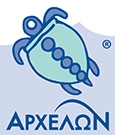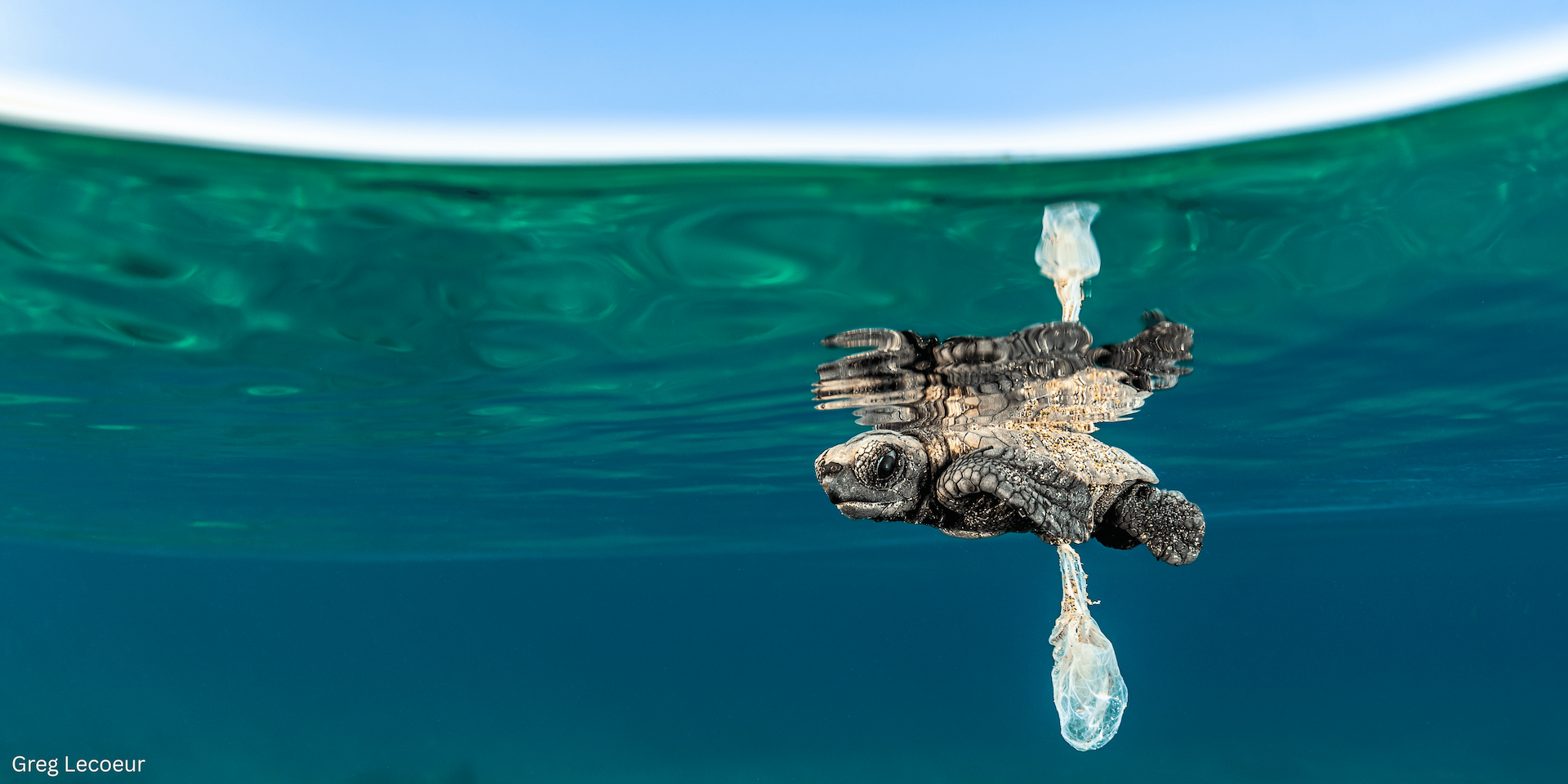ARCHELON's volunteers in Crete strive for the viability of Caretta caretta population
The increased human presence and activities, particularly the uncontrolled tourism development, pose the greatest threats Caretta caretta nesting habitats face and the greatest challenges to their survival. Against these, in Crete ARCHELON have been, for a long time now, combined forces with hundreds of volunteers from around the world in an on-going effort to protect as many nests as possible and enable as many hatchlings as possible to find their way to the sea.
Following the research primarily conducted between 1989 and 1990 recording the first definite observations of nesting activity, ARCHELON counted an important number of nests along the shore in certain areas in Crete.
In total, we patrol 30 km stretch of beach on a daily basis during the whole nesting period. Based on the data gathered from 1990 until 1998, the beach in Rethymno has an average of 385 nests, Chania 116 and Messara 58. That is approximately 600 nests while there is an estimate of 37.000 hatchlings reaching the sea each year. Unfortunately though each year this number is declining continually!! Our program in Crete includes 3 Research Field Stations at Chania, Rethmno and Messara. They are our bases; there live the volunteers doing field work, which is conducted in situ, implementing measures and techniques for the protection of the nests along with a large portion of the public awareness plan, informing the beach users, etc.
Because of the effects of the expanding human interference and the natural risks, we carry out several protection measures on all nesting grounds in Crete. Every nest marked during the morning patrol of the beach is inspected for the suitability of its place. If itʼs considered itʼs apparently safe from flooding or destruction or any other form of human activity (for instance, nest isnʼt next to sea-umbrellas or chairs), we only put a protective cage around it. The cage is useful to locate and identify the nest and protect it from any accidental damage by the beach-users. Only those nests which are to be affected are relocated in a secure setting or placed into an incubator.
The incubators are designated relocation areas, fenced nurseries, where the eggs are placed again until they hatch. The hatchlings success rate is rather high in the incubators which also have an additional beneficial result as they attract beach-users interest.
One of the most critical acts a sea turtle must perform takes place immediately after it views the world for the first time as a hatchling. Under natural conditions, hatchling sea turtles that have just emerged from the sand, crawl in a frenzy directly from nest to sea. Since newly-hatched baby sea turtles find their way to the water by crawling towards the brightest horizon, they can become disoriented and confused by artificial lighting on developed stretches of coastline.
However if that is not possible, ARCHELON volunteers place light shields around the nests to prevent hatchling disorientation. The shields are made from materials as sand and straw mats and are placed lower than 20 cm in such as way as to create a short path to the sea.
This type of intervention reduces significantly the mortality of hatchlings due to light pollution, as it can prevent lights from shining on the beach and confusing them.
At last, letʼs hope our volunteersʼ efforts will again meet with success and this year more hatchings will find the sea. (TBP/ES)
...how wonderful it was, and how proud and grateful I am for this fantastic experience to help save the turtles...
Popularity might prove disturbing for a guest star!
RECENT NEWS
- OUR NEWS01/12/2025
Laganas Bay, Zakynthos: Successful Loggerhead Reproduction, Ongoing Habitat Problems
On the beaches of the Zakynthos National Marine Park, around 2,155 turtle nests successfully hatched thanks to active protection measures, but human pressures on coastal and marine habitats continue.
- OUR NEWS26/11/2025
A Second Chance: Two Loggerhead Sea Turtles Return to the Sea Thanks to Dedicated Rescues
This summer, two adult loggerhead sea turtles, ‘Aktaia’ and ‘Herbert’, arrived at ARCHELON’s Sea Turtle Rescue Centre needing urgent help after sustaining severe head injuries.
- OUR NEWS11/11/2025
Volunteering Projects 2026: Sea Turtles Need You, the Planet Needs Us!
ARCHELON welcomes volunteers from all over the world and of all ages (over 18) and no prior experience is required! If you speak English, are at least 18 years old, and are in good physical condition, you can do this!
- OUR NEWS10/11/2025
Outstanding Recognition for ARCHELON at the Effective Dialogue Conference 2025
On Thursday, November 6, 2025, ARCHELON received an honorary distinction for its substantial contribution to effective dialogue on sustainability, social responsibility, and the environment
- OUR NEWS06/11/2025
6th Year of Online Tours: The sea turtles are traveling across Greece once again!
Students from every corner of the country, as well as from international schools, have the opportunity to learn up close about the lives of the turtles cared for at the Sea Turtle Rescue Centre in Glyfada, Attica, and to discover how rescue efforts impact the marine world.
- OUR NEWS31/10/2025
The lecture turned into reality: A real turtle rescue for the students from Kallithea!
The students spotted a sea turtle floating in the water right after their educational tour of the ARCHELON Rescue Centre and immediately notified the rescuers.
- OUR NEWS24/10/2025
Filming of the LIFE MareNatura documentary is completed
From seabird monitoring and genetic sampling, to unique underwater footage of marine mammals, the testimonies of scientists bring to life the hidden stories of the sea.
- OUR NEWS23/10/2025
ARCHELON participates in the "Science Festival 2025 – The Voice of the Ocean"
The French Institute of Greece is organizing a celebration from 10 to 27 November 2025 dedicated to science and the ocean! World premiere of the LIFE MareNatura documentary on November 13th.
- OUR NEWS22/10/2025
Kyparissia Bay: ARCHELON Records 6,100 Nests and Calls on the State to Immediately Implement the National Action Plan for the Loggerhead
In 2025 approximately 6,100 nests were recorded, marking a 74% increase compared to the average of the previous 12 years!
- OUR NEWS10/10/2025
We bid farewell to a devoted environmentalist and friend, Yiannis Roussopoulos.
- OUR NEWS02/10/2025
Jane Goodall’s words still warm our hearts
Thank you, Dr. Goodall, for all that you have taught us and for the life example you have left behind.
- OUR NEWS29/09/2025
Turtles, Dolphins, and Birds: Local Communities and Scientists come together for the future of Amvrakikos Gulf
A one-day conference held on Wednesday, September 24, in Menidi, Amfilochia, united the voice of the local community with leading scientists and environmental organizations for Amvrakikos Gulf.
- OUR NEWS26/09/2025
Biologists from the 'LIFE ADAPTS' project send their message to the community
- OUR NEWS23/09/2025
Aquila Rithymna Beach Hotel becomes an Advocate for ARCHELON in Rethymno
The hotel's generous donation directly supports the costs of conservation activities during the 2025 and 2026 nesting seasons.
- OUR NEWS19/09/2025
A Season of Success for the Amvrakikos Project
The 2025 field season for ARCHELON's Amvrakikos project has officially come to a close!


